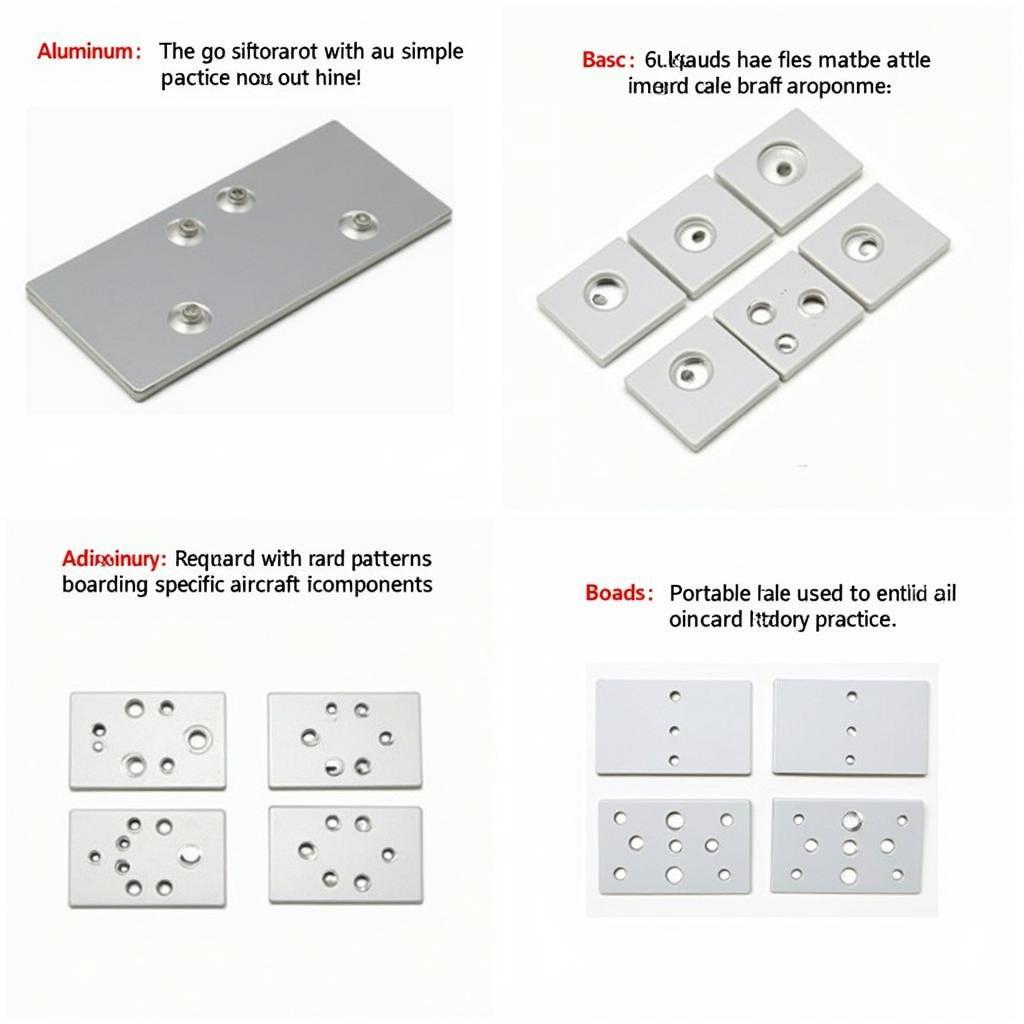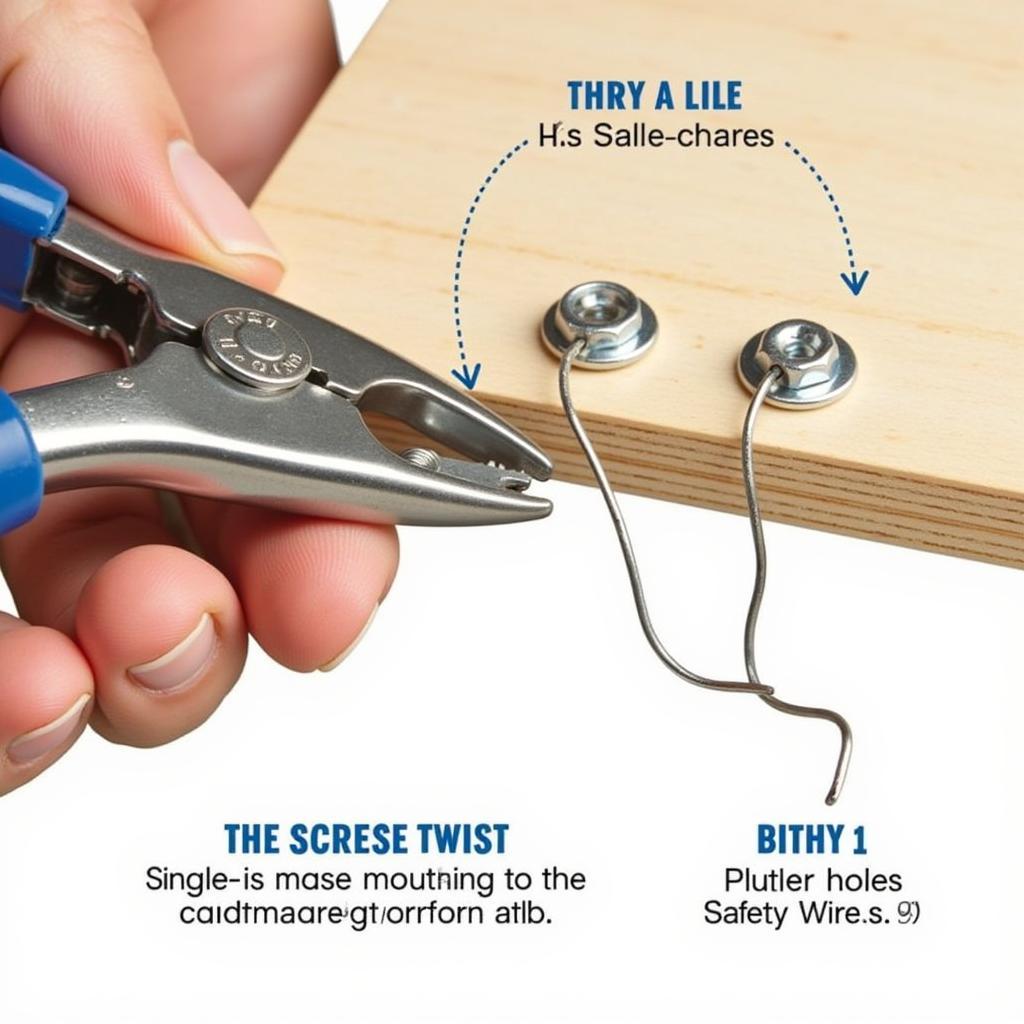Mastering Safety Wire Practice Boards: A Guide to Perfecting Your Technique
November 23, 2024Safety Wire Practice Boards are essential tools for anyone working in aviation, motorsport, or other fields where secure fasteners are critical. These boards provide a controlled environment to practice the art of safety wiring, ensuring consistent, reliable, and safe connections. In this comprehensive guide, we’ll delve into everything you need to know about safety wire practice boards, from their purpose and different types to effective practice techniques and common mistakes to avoid.
Why Use a Safety Wire Practice Board?
Safety wiring is a vital technique used to prevent fasteners from loosening due to vibration or other forces. It’s a crucial skill in industries like aerospace and racing, where even a slightly loose fastener can have catastrophic consequences. A safety wire practice board offers a risk-free platform to hone your skills before working on actual aircraft or vehicles. It allows you to develop muscle memory, perfect your technique, and build confidence in your ability to create secure and compliant safety wire installations.
Types of Safety Wire Practice Boards
 Different Types of Safety Wire Practice Boards
Different Types of Safety Wire Practice Boards
Safety wire practice boards come in various designs, catering to different skill levels and applications. Some common types include:
- Basic Boards: These feature simple hole patterns for practicing basic twisting and looping techniques. They are ideal for beginners.
- Advanced Boards: These boards often replicate specific aircraft or vehicle components, allowing for more realistic and specialized practice.
- Portable Boards: Compact and easy to transport, these are perfect for practicing on the go or in limited spaces.
Essential Tools and Materials
Before you start practicing, gather the necessary tools and materials:
- Safety Wire Practice Board: Choose a board appropriate for your skill level.
- Safety Wire: Stainless steel safety wire in the appropriate gauge is essential.
- Safety Wire Pliers: These specialized pliers are designed for twisting and looping safety wire.
- Drill Bit: Used for drilling pilot holes if your board doesn’t have pre-drilled holes.
- Wire Cutters: For cutting safety wire to the desired length.
Safety Wiring Techniques: A Step-by-Step Guide
The Double-Twist Method
- Select the correct gauge safety wire.
- Cut a length of safety wire appropriate for the distance between the fasteners.
- Insert the wire through the first fastener hole.
- Using safety wire pliers, twist the wire ends together.
- Route the twisted wire to the second fastener hole.
- Insert the twisted wire through the second hole and secure it, ensuring proper tension.
The Single-Twist Method
 Illustrating the Single-Twist Safety Wiring Method
Illustrating the Single-Twist Safety Wiring Method
This method is similar to the double-twist method but involves only a single twist between the fasteners. It’s typically used for close-proximity fasteners.
“Consistent practice is key to mastering safety wiring,” says renowned aviation mechanic, John Smith, from AeroTech Solutions. “A safety wire practice board provides the perfect platform for developing the necessary precision and dexterity.”
Common Mistakes and How to Avoid Them
- Incorrect Twist Direction: Ensure the twists are made in a direction that tightens the fasteners.
- Insufficient Tension: The wire should be taut but not excessively tight.
- Uneven Twists: Practice creating consistent and uniform twists.
- Using the Wrong Gauge Wire: Select the correct wire gauge based on the fastener size.
“Using a practice board allows you to experiment and learn from your mistakes without jeopardizing the integrity of critical components,” adds Sarah Johnson, a lead motorsport engineer at Apex Racing.
Conclusion
Mastering safety wiring is essential for ensuring safety and reliability in critical applications. A safety wire practice board is an invaluable tool for developing the necessary skills and confidence. By dedicating time to practice and following the guidelines outlined in this article, you can perfect your safety wiring technique and contribute to safer operations in your field. Investing in a safety wire practice board is an investment in safety and professionalism.
FAQs
- What is the purpose of safety wire? (To prevent fasteners from loosening due to vibration.)
- What are the different types of safety wire? (Stainless steel, carbon steel, and nickel-base alloy.)
- How do I choose the right gauge safety wire? (Based on the fastener size and application.)
- How often should I practice safety wiring? (Regular practice is recommended to maintain proficiency.)
- What are some common safety wiring mistakes? (Incorrect twist direction, insufficient tension, and uneven twists.)
- Where can I buy a safety wire practice board? (Aviation supply stores, online retailers, and specialized tool suppliers.)
- How do I clean and maintain my safety wire practice board? (Wipe clean with a dry cloth and store in a dry place.)
For further assistance, please contact us at Phone Number: 0963418788, Email: [email protected] or visit our address: 2M4H+PMH, Phường Nghĩa Thành, Gia Nghĩa, Đắk Nông, Việt Nam. We have a 24/7 customer service team.